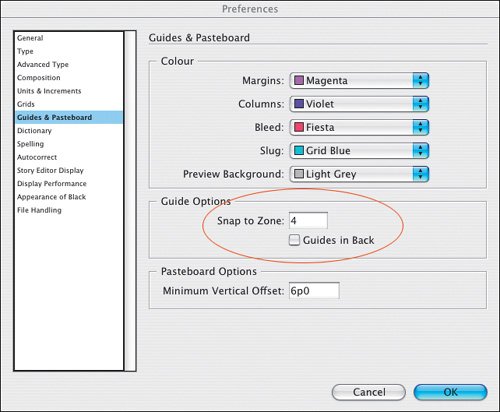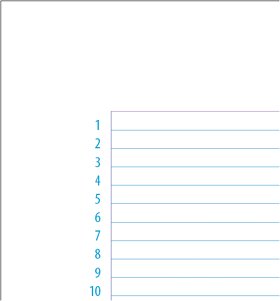Snap to Guides
|
When working with grids it's crucial that Snap to Guides is turned on (View > Guides & Grid > Snap to Guides or Cmd+Shift+; / Ctrl+Shift+;) so that when you draw, move, or resize an object its edges snap to the nearest guide or baseline grid. Guides must be visible in order for snapping to occur, however, objects can snap to the document and baseline grids whether the grids are visible or not. The Snap to Zone in Preferences determines the exact range within which an object snaps to guides. If you have both Snap to Guides and the Snap to Document Grid on, the grid takes precedence. Figure 16.10. Snap to Zone.[View full size image] 
Figure 16.11. Using a line scale can make it easier to identify corrections when communicating remotely with a client.
Tip To draw a custom guide from the horizontal ruler that straddles the left- and right-hand pages of the spread, hold down Cmd (Ctrl) as you draw the guide. You can also position guides precisely by selecting them. For vertical guides specify their x coordinate, for horizontal guides, specify their y coordinate. Text Frames with Different GridsIn addition to a document-wide baseline grid, you can also use a separate baseline grid for each frame. This can be useful if you have sidebar material that flows in multiple columns and uses a different type size and leading than your body text. Theoretically every text frame can have its own baseline grid. It's nice to know you can, but if a document has numerous baseline grids it undermines the whole purpose of a grid: a document architecture based on consistent modular units. |









